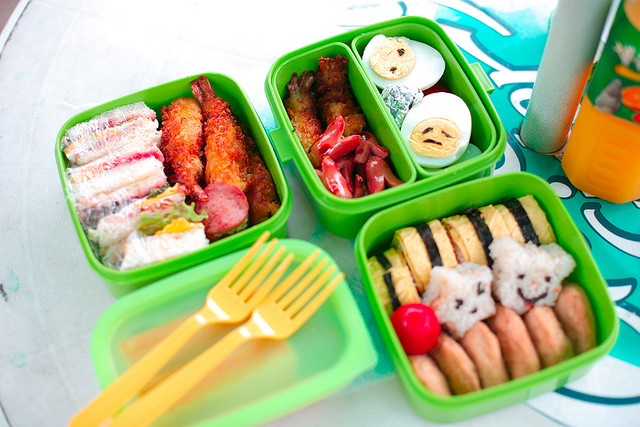Today’s parents know that kids need a nutritional lunch, even at school. But what exactly to put in-and how much of it-can seem confusing. “Healthy meals in general should focus on fruits, vegetables and grains,” says Mary Ellen Renna, MD, a pediatrician and author of Growing Up Healthy the Next Generation Way.
When packing a lunch box, include:
- 6 ounces of grains. Choose as many whole grains as possible, since they contain fiber and vitamins that refined grains lack. Look for whole grain breads, tortillas, pastas and cereals.
- 2½ cups of vegetables and 1½ cups of fruit. Keep your selections varied, since different fruits and veggies offer different nutrients. Also, try to buy what’s in season.
- 3 cups of milk (2 cups for kids ages two to eight) or an equivalent calcium source. Get calcium from lowfat milk and cheese, yogurt, calcium-fortified soy, and dark, leafy greens.
- 5 ounces of protein. Look for lean varieties of turkey, chicken and ham, fatty fish such as salmon and tuna, as well as legumes, tofu and tempeh.
When grocery shopping, parents should look for unprocessed foods. “A good rule of thumb is, if a label has unpronounceable ingredients or if an ingredient looks like it would be on your shampoo bottle, avoid it,” says Jennifer Bevilacqua, a nutritionist who helps families overhaul their kitchens for healthier eating.
Follow these guidelines in the grocery store:
- Look for whole grains and whole wheat in bread and grain products.
- Buy fresh fruits and vegetables, and look for dried fruits labeled “unsulphured” and “unsweetened.”
- Choose lowfat and organic dairy products.
- Choose nitrite-free lunchmeats and low-mercury tuna.
- Pack soy nut butter or SunButter instead of peanut butter, since many children are allergic to peanuts and tree nuts.
Products to avoid:
- High-fructose corn syrup
- Partially hydrogenated oils
- Trans fats
- Nitrite (an additive often used in lunch meats that becomes a carcinogen in our bodies)
- Artificial sweeteners (often found in products marked “light” or “sugar-free,” or you may see aspartame, Splenda, sucralose or saccharin in the ingredients list)
Getting a Picky Eater to Eat
- Include children in lunch prep. “Kids are more likely to eat something if they’re involved in making it,” says Bevilacqua.
- Limit choices. Rather than asking your child what he wants out of a limitless selection, Renna suggests giving him two or three healthy options.
- Make trying mandatory. Make it a rule that your kids have to at least sample new foods.
- Educate them. Renna stresses the importance of letting kids know the benefits of each food. For example, explain how calcium will help them grow strong bones.
- Looking good, feeling good. Presentation is a key part of eating. Kids gravitate toward small portions, fun shapes and cute containers.






